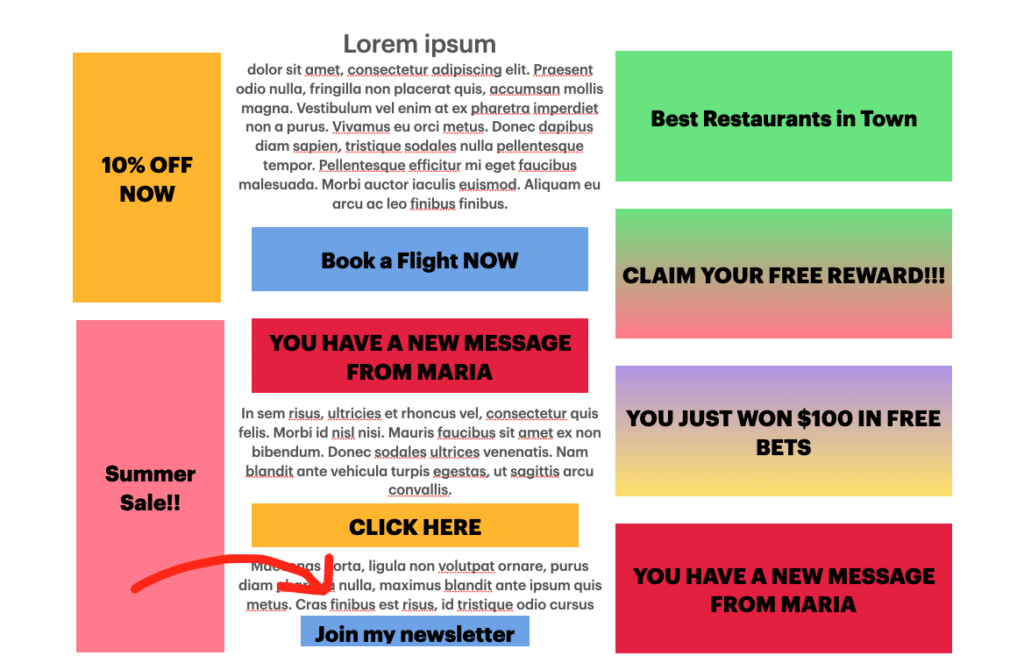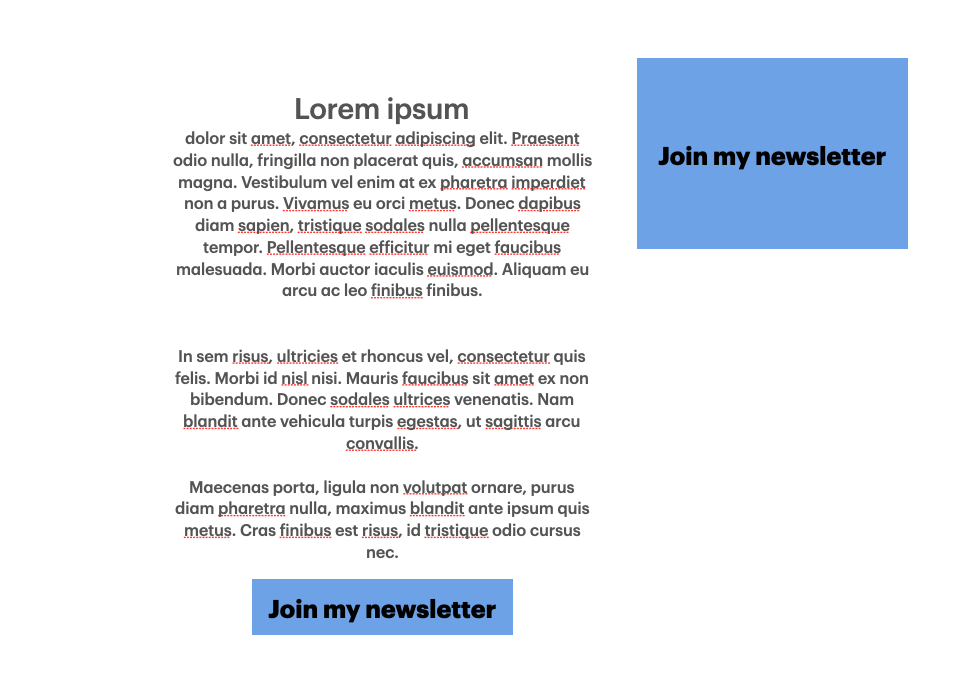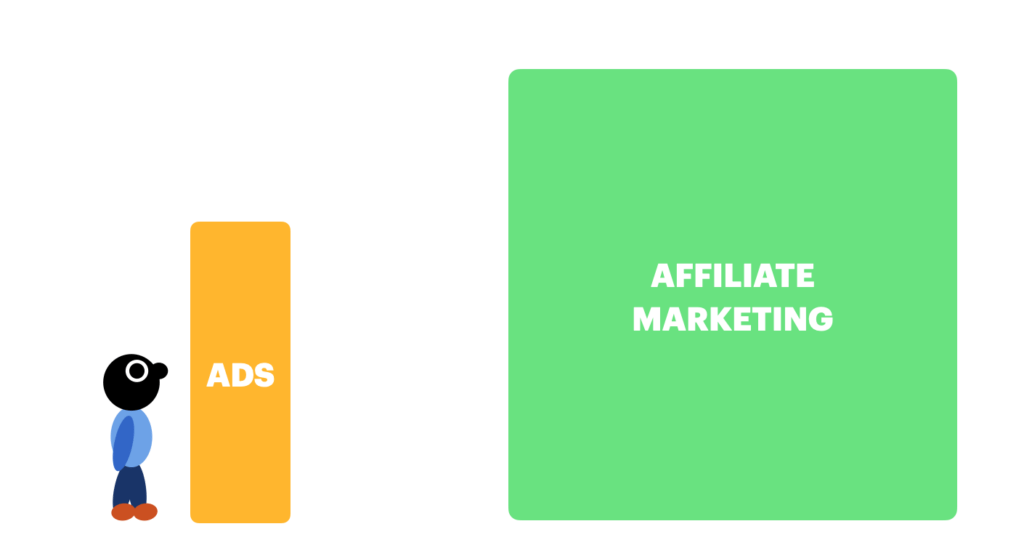Showing ads is an easy way to monetize a blog. With modern ad networks, you don’t even have to worry about placing ads on your site—the ad network does that automatically.
Unfortunately, ads are a risky and highly underpaid way to monetize a blog. Many bloggers (including me) say ads should be the last resort for monetizing a blog. Much better strategies such as affiliate marketing exist.
Here’s a list of reasons to avoid ads (that your ad network will deny).
1. Ads Impact Your Rankings
Having ads on your site can impact rankings on search engines like Google.
This makes sense if you think about it. If there’s a site with no ads, Google is much happier to suggest it to the readers instead of the site with ads.
Search engines appreciate quality content with a pleasant reading experience.
Unfortunately, to make ads work, there needs to be a ton of those. They need to be clickbaity, intrusive and placed everywhere. This is the last thing visitors want. Thus, this is the last thing search engines want to suggest to their users.
My story: 3 weeks after placing ads on my site, the traffic started trending down and did so for 5 months. Before ads, the traffic had an upward for 1.5 years straight back to when I started my blog.
And no, it was not a Google update—all search engines dropped my site lower.
I decided to pull the plug on the advertisements. 2 weeks in and the traffic picked back up again…
2. Ads Yield Small Earnings
To make a decent income with ads, you need tons of traffic. And I mean tons.
As a new blogger, you usually target a narrow niche. This means even 10,000 monthly views is much. Sadly, with 10,000 monthly visitors, you’ll probably end up making $10-$100 dollars in the best case.
On the other hand, if you get 10,000 visitors to a well-targeted affiliate post with a good commission structure, you can easily make $1,000+/month. That’s 10-100x more than with ads!
The best part is that writing high-earning affiliate posts is no harder than writing any other kind of blog post.
In the best season, I’ve made $15 per 1,000 visitors from ads. On the other hand, I have an affiliate post that makes $300 per 1,000 visitors with 0 ads.
3. Negative User Experience
Ads look bad. There’s really no way around it. Usually, they take a big chunk of space on the page to be effective. This negatively impacts the user experience.
Even worse, most ads slow your site down because it takes time for them to load.
To build a successful blog, you need to provide value to your readers—quickly.
If you show ads before answering the question, you’re slowing the visitor down and they might get frustrated and go away.
If the site takes forever to load, no one is going to stick around to wait.
I have a blog in the coding niche. My goal is to answer developers’ questions as quickly as possible so they can continue their work. This means placing a quick answer right at the top of my blog posts.
When I started using ads, the top parts of my posts were littered with ads. This turned visitors around as they couldn’t see the code solution right away.
4. Ads Break UI
Ads tend to make the user interface look cheap or broken.
The ads break the layout of your blog—intentionally.
Because of banner blindness, many ad networks want to place ads in unconventional places to better draw readers’ attention. The ads aren’t even meant to smoothly fit into your site—otherwise, no one would click them.
This makes the user interface break. Sometimes, your site might even look as if it’s been hacked.
5. No Value to Readers
As a blogger, your goal is to solve the reader’s problem. Anything that doesn’t contribute to solving the problem shouldn’t be there.
Sadly, ads bring no value and are not part of solving a problem. Most of the time, they are intrusive banners that retarget products the visitor has searched for in the past. Not good!
6. Ads Kill Your CTAs
There’s a big chance your blog has a call to action somewhere. Common CTAs include newsletter signups, links to other posts, social sharing, and more.
But ads also involve call-to-actions that interfere with yours.
If you try to convert a visitor to sign up for a newsletter on a page with 10 similar CTAs, they will likely miss it.
I hope this example demonstrates what I mean.
Here’s a post with ads:

And here’s a site without ads:

In the latter example with no ads, the newsletter CTA is clearly visible. In the ad example, no one is going to pay attention to your newsletter CTA because of all the intrusive ads.
7. You Work for The Ad Company
One of the main reasons why you became a blogger is freedom, right?
But if you show ads on your site, you need to comply with the ad network’s content policies.
Many ad networks have the right to take your articles down if they don’t like them. In other words, you end up working for your ad network. They decide what you can publish and what you cannot.
And we’re not talking NSFW/controversial/clickbait here. It can be anything.
For example, if for some reason, your ad network doesn’t prefer dogs, they can take all posts with dog mentions down.
8. Ads Are too Easy
Setting up ads is the easiest way to monetize a blog. Just build a site and let your ad network place ads there. You can do this in minutes.
The easiness of ads can leave better strategies unnoticed.
One such strategy is affiliate marketing. Writing an affiliate post is easy, yet many bloggers don’t even consider doing that.

I made a big mistake with the ads. For a long time, I treated them as the main source of income. I spent 8 months writing content that now earns just $1,500 per month from ads. After realizing this, I only spent 4 months writing affiliate posts that now earn close to $10,000+ per month.
Wrap Up
I think ads should be the last resort for monetizing a blog. If nothing else works after trying hard, then show ads.
By showing ads, you’re risking reputation, smooth UI/UX, good standing with Google, and more.
Better (and still easy) strategies include affiliate marketing and having a newsletter.
The only ideal use case for ads (that I can think of) is to monetize posts that drive no sales or subscribers. It took hard work to write those posts, yet they bring no money back. In this case, ads are a good last resort to squeeze out the extra pennies.
